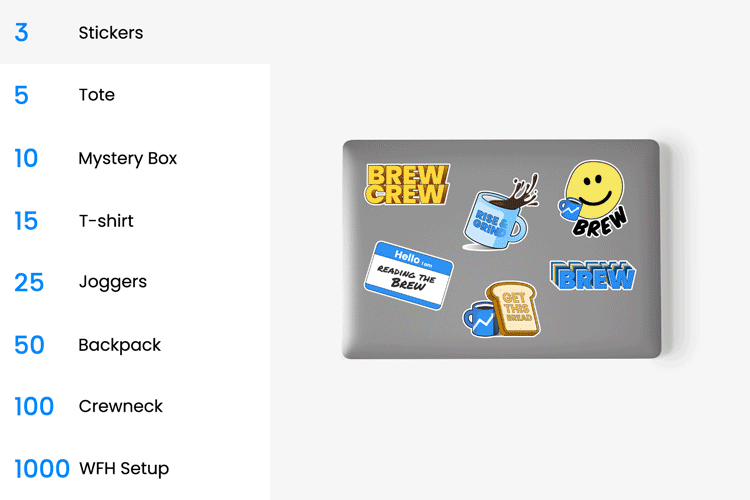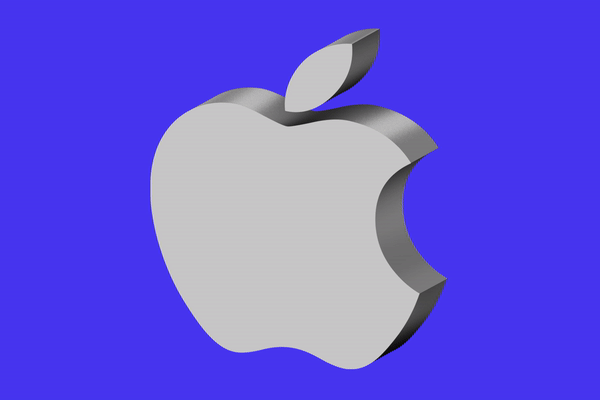It’s Friday. Hello and TGIF! We’re a little AI’d out, but we were intrigued when we heard about a use case for the tech beyond the composition of ho-hum emails and production of post-meeting document summaries. Patrick Kulp talked to the CEO of Ginkgo Bioworks about generative AI’s potential in a field well outside the enterprise: biotech.
In today’s edition:
—Patrick Kulp, Kelcee Griffis, Annie Saunders
|
|
Jason Kelly
ChatGPT might suffice for clacking out an email to your boss, but can the same style of AI write a DNA sequence for a life-saving drug?
The scientists behind a new crop of foundational models are hoping there’s a chance. One of those projects comes from Ginkgo Bioworks, which recently announced a five-year deal with Google Cloud to host AI geared toward synthetic biology.
Ginkgo, which works on the genetics behind everything from pharmaceuticals and fertilizers to fragrances and cannabinoids, has two advantages in its own effort: a big store of proprietary data from its 15-year history and the automated infrastructure to collect it, according to Ginkgo’s CEO and co-founder, Jason Kelly.
We spoke with Kelly about generative AI’s potential for biotech, what went into the experiment, and what it might yield.
This conversation has been edited for length and clarity.
How is Ginkgo attempting to bring generative AI to biotech?
The question now is, “Could we make foundation models in biology? What would that look like?” Well, for starters, DNA is code, right? So if you take a gene, which is one element of DNA, a human would have tens of thousands of genes. So you got a gene, it is read from start to finish, like a book. So you can do the exact same kind of [predictive training as large language models], except in this case, it’s a gene from nature. And, like, our “internet” is nature. Because just like the internet was not just made-up random words—that’s why these models can actually learn English; it was English sentences written by humans who know grammar, and then the model backed out from all that we know in our heads [like] how grammar works. Same thing with the genomes out in nature—they are not random sequences of [DNA bases] As, Ts, Cs, and Gs; they are a product of 4 billion years of evolution; there is a grammar to them. They are a language; there is a design to a protein that makes it a good protein. And if you jumble it up, it turns into a piece of crap…Like, genetic diseases are exactly that—a mutation that breaks them.
Keep reading here.—PK
|
|
“There has to be a better way,” you think, buried under a pile of receipts that will take hours to manually expense. Chin up, there’s a better way with Brex.
Brex’s spend management is everything those clunky, tedious processes aren’t: integrated, unified, and AI powered. It’s got a modern UX with automations that are both easy to use and delightfully efficient.
And Brex’s new AI feature gives each employee their very own AI-powered expense assistant. So when they have a question or a task to do, they can delegate to the assistant.
It’s no wonder Brex is saving companies up to 4,000 hours a year—all while increasing compliance and accuracy.
Get a spend management platform that makes you think, “Wow, that was so…easy.” Switch to Brex.
|
|
Francis Scialabba
The high marks with “Mother Nature” that Apple recently touted in a promo video might be somewhat questionable, but the company does lead its Big Tech peers in climate initiatives, according to a new report.
Environmental org Stand.earth sized up the track records of six tech industry giants—Apple, Dell, Google, HP, Microsoft, and Nvidia—when it comes to their decarbonization efforts. Among them, the report found that Apple has the edge in a couple of key factors.
Apple is the only company of the six to have “generated or sourced enough renewable electricity to match 100% of electricity demand for its corporate operations since 2018,” and the only one to have set a 100% renewable energy target for its supply chain. The company has also set loftier greenhouse gas reduction goals for 2030 than its four competitors with similar timelines—Apple aims to cut 75% from its 2015 levels, while other companies have pledged around 50% each.
The report comes on the heels of another investigation from a separate organization last month that called into question Apple’s claims around its first carbon-neutral products—a recently announced lineup of Apple Watches. The company has faced added scrutiny around its climate goals since it put sustainability front and center at its flagship event last month with a five-minute sketch featuring Octavia Spencer as “Mother Nature.”
Keep reading here.—PK
|
|
Tanja Ivanova/Getty Images
Can’t find the Red Lobster cheddar biscuit mix at Sam’s Club? Just ask the floor-sweeping robot.
IT Brew caught up with the bulk-discount behemoth’s SVP and chief product officer, Tim Simmons, who told us how the retailer thinks about technology and uses it to solve problems for both members and employees.
From implementing “scan and go” capabilities that let shoppers tally up their cart via a mobile app to improving real-time inventory tracking, Simmons said his team looks at customers’ biggest hurdles toward having a seamless shopping experience and then works backward.
“We focus on members, on big member pain points. We try to really fall in love with that problem and understand what’s the most impactful thing and solution we can do,” he said.
Keep reading here.—KG
|
|
|
Sip more, stress less. Know what doesn’t pair well with a seasonal latte? Endless invoices and approvals that demand your attention. Fortunately, BILL can help you approve, pay, and sync bill payments; send custom invoices; and get paid faster. Take a demo before Oct. 31 and get a $50 Starbucks gift card.
|
|
Stat: Up to 25%. That’s the reduction in time to fulfill an order under a new Amazon robotics and AI program, according to the company. The Wall Street Journal reported that the new system, called Sequoia, “is designed for both speed and safety.”
Quote: “There’s a trade-off, of course. That’s how the covenant goes—in exchange for seamless living, our technologies require a token in return. Our faces. Our data. Our selves. The AI-enabled photo editing on Google’s latest smartphone, though, exacts a different price. It offers an easy approach to all that you do, capture, and create, but its tariff is authenticity.”—Wired’s Jason Parham on the new AI photo editor in Google’s Pixel 8
Read: Twilight of the heroes of capitalism: How Michael Lewis got duped by Sam Bankman-Fried (New York)
Easy expensing: Level up your corporate expense management with Brex. Their integrated AI-powered spend platform increases compliance, accuracy, and efficiency with automations that can reduce busywork. Try it out.* *A message from our sponsor.
|
|
Tovovan/Getty Images
Usually, we write about the business of tech. Here, we highlight the *tech* of tech.
Express yourself: It’s likely not a surprise to anyone here that emoji represent a huge part of the vocabulary of basically anyone who communicates via text. Eschewing emoji in day-to-day communication would render one quirky and difficult, like hipsters who adopted waxed mustaches or relatives who say the “markets should decide” whether ICE vehicles go the way of the dodo.
Which is why it’s so important that emoji evolve as the internet does. Jennifer Daniel, dubbed “the woman who will decide what emoji we get to use” by the MIT Technology Review, pens an informative Substack newsletter about, well, emoji. Her most recent entry is about changes that allow communicators to be more fluid when it comes to skin tone and gender preferences for emoji. To which we say: 
Get in, losers. We’re using passkeys now: We all dutifully signed up for 1Password or Dashlane a few years back so we wouldn’t be horrifying security risks (right? We’re all using password managers? Right?!).
Well, if you’re still using the same password from college for nearly every internet account you log into, and you haven’t had your identity stolen or your social media accounts hacked, congrats: You made it.
Google is one of several companies that recently announced plans to introduce passkeys, a more secure alternative to passwords. The Washington Post has a helpful explainer on how to enable them. Go do it! Maybe now your spouse will stop badgering you to join their password manager’s family plan.
|
|
|
Share Tech Brew with your coworkers, acquire free Brew swag, and then make new friends as a result of your fresh Brew swag.
We’re saying we’ll give you free stuff and more friends if you share a link. One link.

Your referral count: 2
Click to Share
Or copy & paste your referral link to others:
emergingtechbrew.com/r/?kid=303a04a9
|
|
ADVERTISE
//
CAREERS
//
SHOP 10% OFF
//
FAQ
Update your email preferences or unsubscribe
here.
View our privacy policy
here.
Copyright ©
2023
Morning Brew. All rights reserved.
22 W 19th St, 4th Floor, New York, NY 10011
|
|









